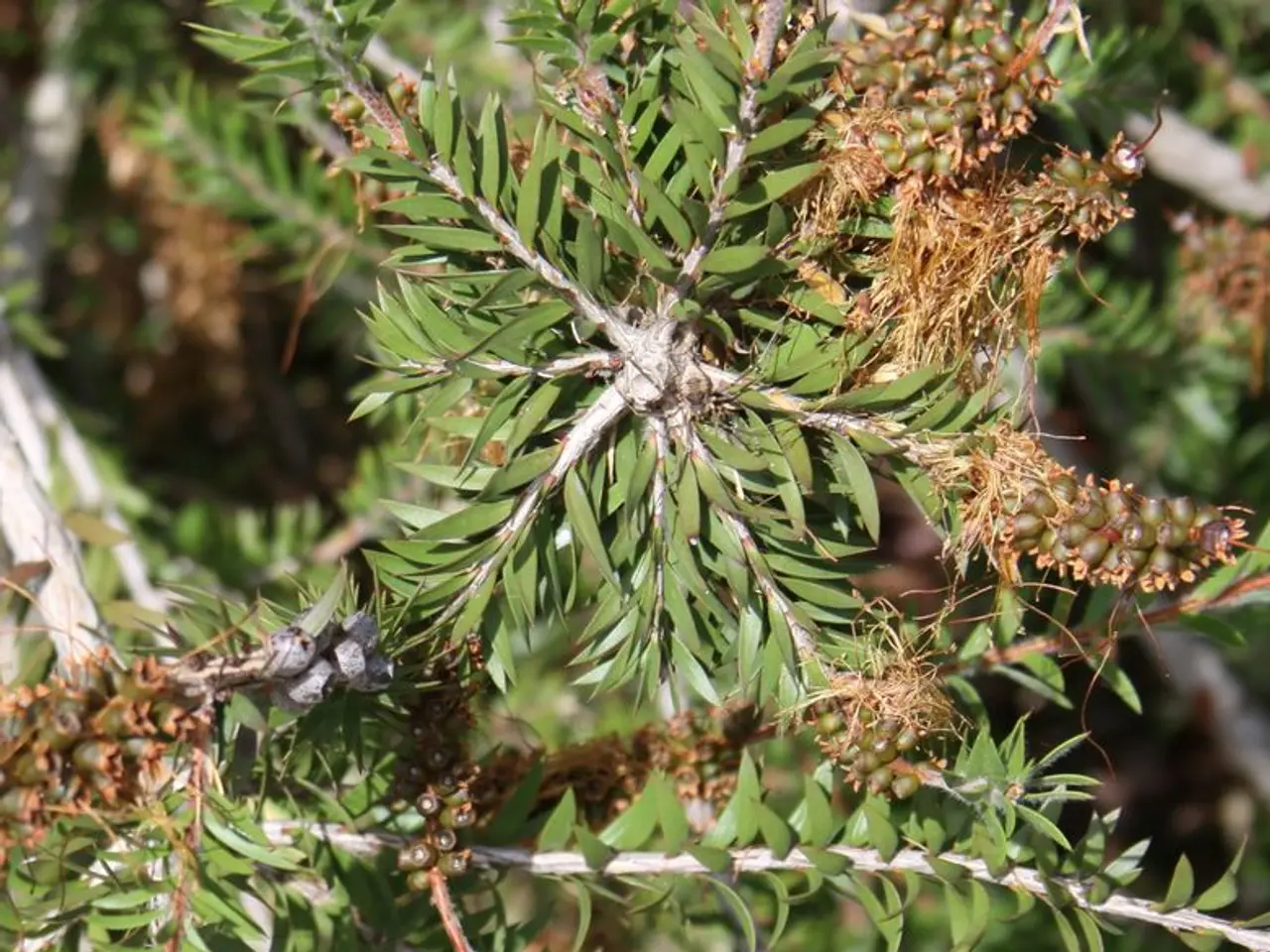Trimming Fruit Trees During the Summer Months
Summer may not be the ideal season for planting bare-root fruit trees, but with careful preparation and attention, it is possible to ensure a successful establishment. Here's a guide to help you get started.
Firstly, when planting a bare-root fruit tree in summer, it's essential to soak the roots in water for 1-2 hours to rehydrate them. Choose a location with full sunlight, ideally 6-8 hours daily, and enough space for the tree’s mature size. Dig a wide planting hole large enough to spread out all the roots without bending, creating a small mound in the center to help spread the roots evenly. When placing the tree in the hole, gently spread the roots out over the mound, ensuring the root collar is just above soil level. Fill the hole carefully with soil, firm it gently to eliminate air pockets, and water thoroughly to settle the soil and hydrate the roots. Apply a 2-4 inch layer of mulch around the base to retain moisture and suppress weeds. Summer planting requires consistent watering, as dry conditions can reduce flowering and fruiting next year.
Planting bare-root trees is ideally done in late autumn to early spring while dormant. However, if planting in summer, intensive watering and shading may be necessary to reduce stress.
Regarding pruning fruit trees, the best secateurs should offer clean, precise cuts and be easy to handle. Always use clean secateurs to prevent disease spread and make smooth cuts for quicker healing. Bypass secateurs, with their curved blades that cut like scissors, are generally preferred for fruit trees. Look for secateurs with comfortable grips and spring mechanisms to reduce hand fatigue. Popular high-quality pruning secateurs include Felco, Fiskars, and Bahco, known for durability and precision.
When pruning stone fruits in summer, don't prune in damp weather. Shorten the lead shoot at the end of each branch by half its length during pruning. Only cut the current season's growth this way, cutting to just above a leaf. Taking out new growth in summer opens up the leaf canopy, which improves air circulation and deters pests and diseases, which thrive in sheltered conditions. Dwarf fruit trees can also be pruned in summer.
Once a framework for stone fruits is established, keep pruning to a minimum. Pruning fruit trees in July can improve fruiting and limit the size of the tree, making it suitable for a small garden. The Darlac Expert Bypass DP1030A, Burgon and Ball Left-Handed Bypass, Niwaki GR Pro, and Felco 8 Bypass Secateurs are recommended for pruning fruit trees.
Always disinfect your secateurs after pruning with bleach or white spirit to avoid spreading infection. Shortening the lead shoot encourages the production of sideshoots and helps to limit the spread of the tree. Removing foliage also reduces the amount of water the tree needs, as most water is lost through the leaves.
For more information on tools for pruning, refer to our guide. It's also essential to know what other plants need pruning in summer. Find out and maintain a healthy garden this summer.
While planting a bare-root fruit tree during summer, it's crucial to maintain an appropriate lifestyle by providing ample water and essential care, as a home-and-garden gardening task. In addition to the watering and soil care mentioned earlier, consider incorporating gardening practices like pruning to foster the tree's growth and health, as recommended later in the guide when discussing summer pruning techniques for fruit trees.




